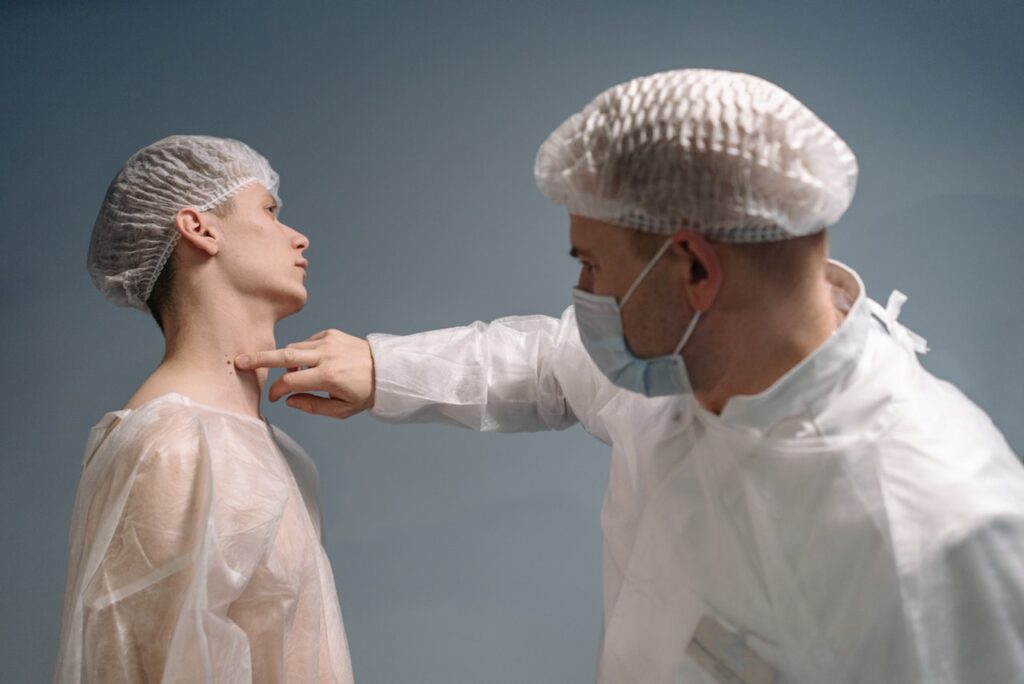
By: Dr. Christine Cabell, dermatologist, Mohs micrographic surgery
Ever noticed a new bump on your arm or a darker-colored patch on your back you hadn’t seen before? Sometimes it’s nothing to worry about. But keep an eye on it for the sake of your health.
While early-stage skin cancer may be limited to a spot or mark on your skin, untreated skin cancer, like many other forms of cancer, can advance and spread to other parts of the body.
You can catch skin cancer before it has time to spread by getting familiar with all the moles and marks on your body. Check them periodically and pay special attention to areas exposed to the sun. Use a mirror for hard-to-see places on your body. Don’t forget to check your scalp, between your toes and the soles of your feet. Look for changes in any moles or spots on your skin.
Benign (non-cancerous) moles can be different colors, shapes and sizes, but they tend to have these characteristics:
- Color – Most are brown, but they can also be tan, black, blue, red or pink.
- Shape – They are generally oval or round with regular borders.
- Size – Most normal moles are less than ¼ inch in diameter, or about the size of a pencil eraser.
When checking your skin, look for moles or spots that vary from these normal guidelines.
Types of skin cancer and what to look for
There are many types of skin cancer, but the three most common are basal cell carcinoma, squamous cell carcinoma and melanoma. Each has different characteristics and appearance.
Basal cell carcinoma
This common type of skin cancer usually develops on skin regularly exposed to the sun. It can look like:
- A waxy bump
- A new “pimple” that doesn’t go away
- A flat, skin-colored or brownish scar-like lesion
- A scab-covered or bleeding sore that heals and comes back
Squamous cell carcinoma
This skin cancer is also common and occurs most often on sun-exposed areas, especially your face, ears and hands. It can appear as:
- A non-healing scabbed area
- A firm pink or red bump
- A flat lesion with a crusty surface
Melanoma
Melanomas, which develop in the pigment-making cells of the skin, aren’t as common as basal cell and squamous cell skin cancers and can be much more serious — melanoma is much more likely than other skin cancers to spread to other parts of the body if not caught early.
Melanoma can appear anywhere on your body, both in normal skin and existing moles. It can be seen as:
- A brown spot with darker specks
- A mole that changes appearance (color, size or texture) or bleeds
- A dark lesion that is painful, itches or burns
- A small lesion with irregular borders and parts that look red, pink, white, blue or black
Spot the warning signs of melanoma by remembering ABCDE
- Asymmetrical: The mole or spot has an irregular shape, with one half looking very different from the other.
- Border: The border is jagged or irregular.
- Color: The color is uneven.
- Diameter: The mole is larger than the size of a pea or pencil eraser.
- Evolving: The spot has changed during the last few weeks or months.
What to do if you find a suspicious mole
If you notice any of these changes, don’t ignore the spot, even if it doesn’t hurt. Skin cancer can be painless yet dangerous at the same time. If you notice warning signs of skin cancer, see your doctor right away.
Luckily, not all skin changes turn out to be skin cancer. If you notice anything that worries you, though, make an appointment with your primary care doctor or a dermatologist.
Your doctor will examine your skin and may remove a sample for testing. If it is cancerous, they’ll discuss treatment options with you.
Reduce your risk of skin cancer
Most skin cancers are caused by frequent exposure to ultraviolet rays. UV rays come from the sun or by artificial means — sunlamps and tanning beds. You can lower your risk of getting skin cancer by adopting some sun safety habits:
- Stick to the shade when possible.
- Cover your skin with clothing to block harmful UV rays.
- Keep your head and neck shaded with a wide-brimmed hat.
- Protect your eyes with sunglasses that block UV rays.
- Use a broad-spectrum sunscreen with a sun protection factor (SPF) of 30 or higher.
Tanned skin doesn’t equal healthy skin. Avoid tanning — outside or indoors. Tanning beds and sunlamps expose you to high levels of UV rays and can easily burn and damage your skin.
Regular screenings can identify skin cancer in its early stages, when it’s much easier to treat. Your doctor can tell you how often you should have your skin checked.
Your skin is your largest organ, so good skin care is a big part of your health and well-being.
For the latest health and wellness tips and advice, visit geisinger.org/balance.


